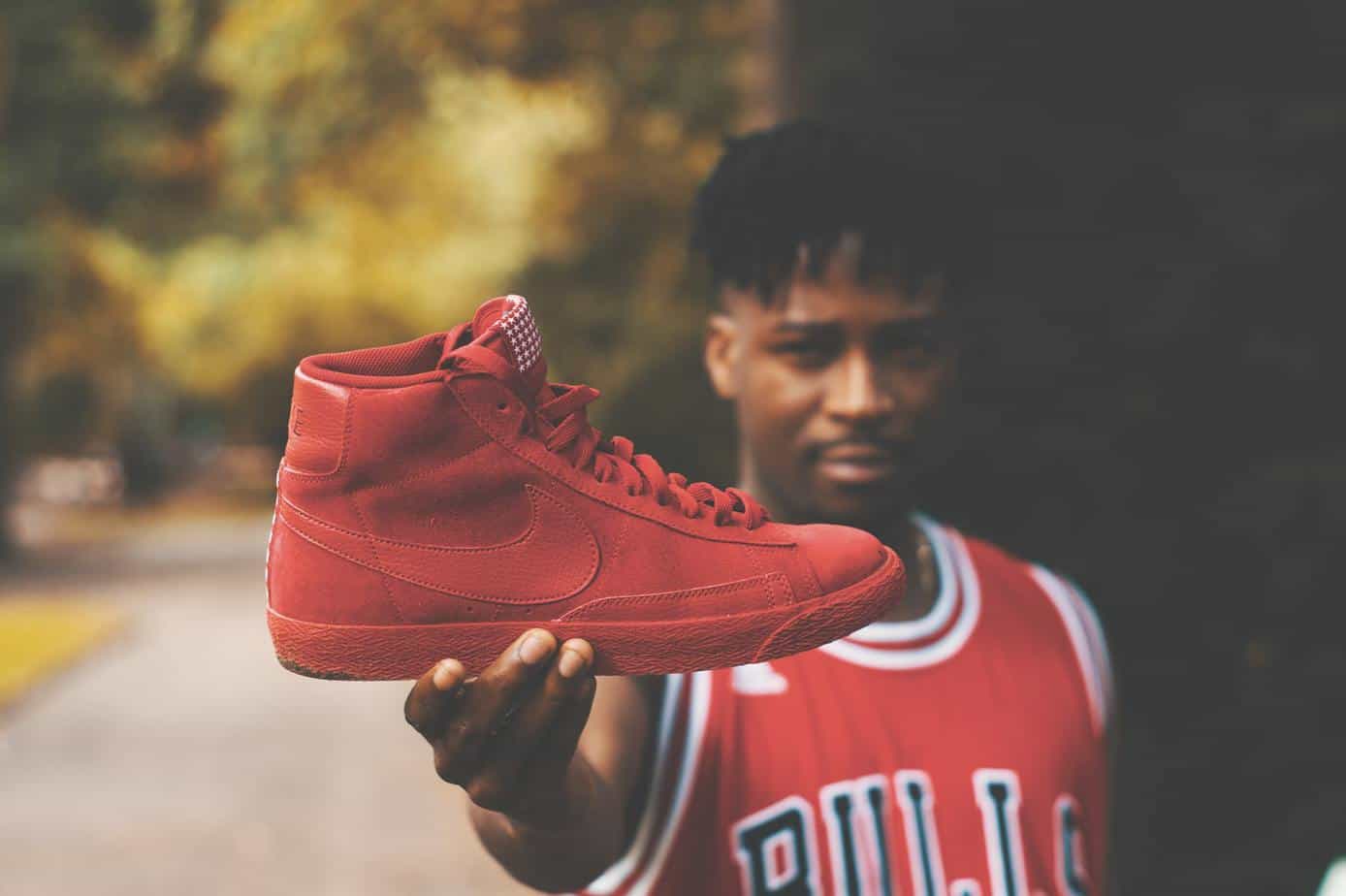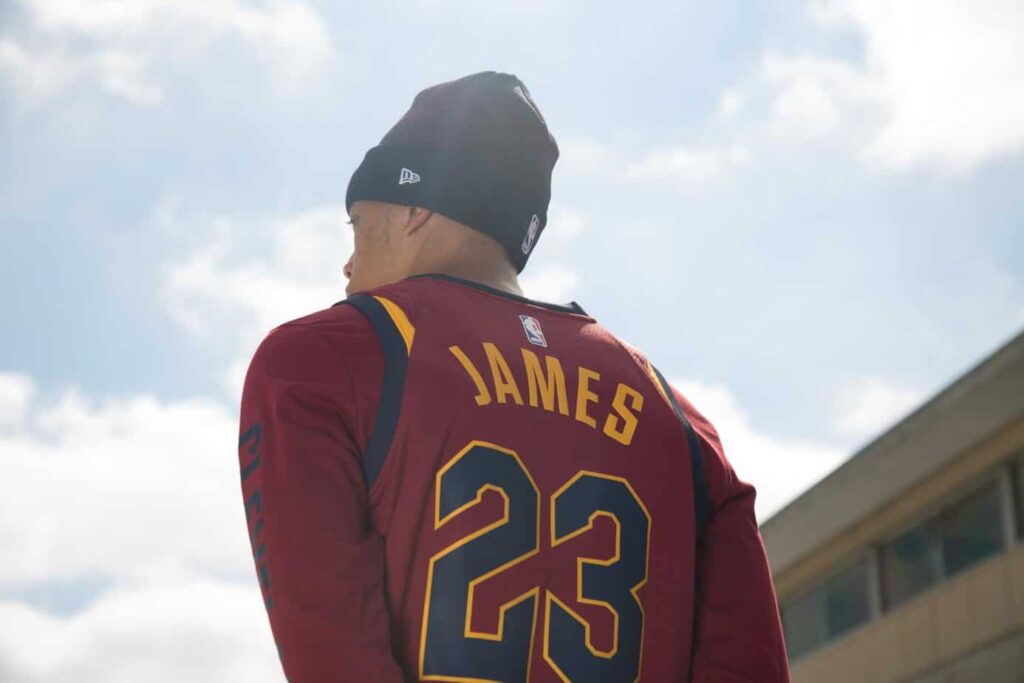When it comes to the US’s four major league sports, the NFL, NBA, MLB, and NHL, most fans know that football reigns supreme in viewership and revenue for the overall business. However, the NBA has long rivaled the NFL in terms of innovation and popularity.
The NBA knows how to turn a star athlete like Michael Jordan or LeBron James into an international superstar while also pulling in nearly $9 billion (according to Forbes for the 2017-18 season). The highest-paid NBA players will earn the most outside of their annual salaries.
For the NBA’s 30 teams, each worth at least $1 billion, merchandising is one of the most lucrative ways the league earns money aside from broadcasting rights and official sponsors. And not even the NFL can compete with its sponsored merchandising business model.
America’s (Second) Favorite Sport
Basketball has solidified itself as one of the most dynamic and entertaining sports in the United States, with the NBA at the forefront of driving its popularity both domestically and internationally. Often hailed as America’s second-favorite sport, basketball combines athleticism, strategy, and showmanship, which has kept fans engaged season after season. While the NFL might take the top spot in terms of overall viewership, the NBA holds a distinct advantage when it comes to cultivating a global fanbase and capitalizing on commercial opportunities.
One key factor in basketball’s success lies in its ability to engage with diverse audiences across the world. The NBA has been particularly successful in expanding its reach to international markets, with broadcasts in over 200 countries and a growing number of international players making their mark in the league. Stars like Giannis Antetokounmpo, Luka Dončić, and Joel Embiid hail from countries outside the U.S., demonstrating the NBA’s ability to foster global talent. This, in turn, fuels the league’s global fanbase, which is continuously growing thanks to social media and live streaming. Today, over 25% of the league’s players are from countries outside of the United States, further solidifying its reputation as a global sport.
But it’s not just the on-court action that drives basketball’s popularity—it’s the league’s willingness to innovate. For example, the NBA was one of the first major U.S. sports leagues to recognize the financial potential in embracing sports betting. Long before the U.S. Supreme Court repealed the PASPA law in 2018, NBA executives, led by Commissioner Adam Silver, publicly supported legalized sports betting, recognizing it as an avenue to boost fan engagement. The league’s forward-thinking approach positioned it to benefit from the legalization of sports betting in various states, which has now opened up new revenue streams and intensified fan interest in the sport.
With the regulation of sports betting, NBA games have become even more thrilling for fans who enjoy placing bets on individual performances, final scores, and live, in-game action. NBA betting, particularly with the popularity of prop bets, player performance wagers, and money lines, has grown rapidly in recent years. According to estimates, in 2021, around $21 billion was wagered on sports in the U.S., and the NBA was one of the most popular leagues to bet on. This kind of fan engagement not only increases the excitement surrounding games but also drives viewership and interaction with the sport in a way that was previously unimaginable.
The surge in NBA betting has allowed legal sportsbooks to cash in on the NBA’s fast-paced nature, which is particularly suited to in-game and prop bets. As opposed to football, which has breaks between plays, basketball’s constant movement keeps bettors engaged throughout the game. Whether it’s wagering on how many points LeBron James will score in the second half or predicting whether Stephen Curry will hit a buzzer-beater, the possibilities for betting on basketball are seemingly endless. Sportsbooks now offer extensive NBA betting tips, expert analysis, and real-time odds to keep fans informed and involved, contributing to the sport’s rise in both viewership and betting activity.
Aside from sports betting, the NBA has also pioneered other commercial ventures that enhance fan interaction. In 2017, the NBA broke tradition by allowing teams to feature corporate sponsorships on player jerseys, a move that generated millions of dollars in additional revenue. What was initially a controversial decision is now seen as a lucrative business model, with jersey sponsorship deals worth tens of millions of dollars annually for some teams. Brands such as Rakuten, StubHub, and Bumble have all jumped at the opportunity to have their logos displayed during live games and seen by millions of viewers.
These innovations reflect the NBA’s ongoing commitment to evolving with the times, which sets it apart from other sports leagues. The league’s ability to blend the traditional elements of the game with cutting-edge advancements in technology, media, and fan engagement has solidified its place as one of the most popular sports leagues in the world. The NBA’s forward-thinking strategies, combined with its fast-paced gameplay and international reach, make it more than just America’s second favorite sport—it’s a global entertainment juggernaut poised to continue its upward trajectory for years to come.
In conclusion, the NBA’s success can be attributed to its ability to innovate both on and off the court. Whether it’s through embracing sports betting, fostering international talent, or pioneering new revenue streams like jersey sponsorships, the NBA continues to lead the way in modern sports marketing and fan engagement.
Franchise Sponsors & League-wide Sponsors
Known as the ‘jersey patch program,’ the deal between the league and franchises allowed each team to sign on big-name sponsors, from General Electric to Walt Disney Company to Rakuten.
Despite the patch program being limited to a shoulder logo only 2.5 inches wide on each jersey, the introduction of merchandising sponsors has seen each team net up to $9 million annually (with the Golden State Warriors taking up to $20 million). Since the program’s start, the NBA has earned up to $150 million in jersey patch revenue alone.
Two years before the jersey patch program, the NBA ended its contract with Adidas and signed an eight-year contract with Nike. The multi-year deal will see the athletic retail company pay out a total of $1 billion to the basketball league for a staggering 245% annual increase compared to their Adidas deal.
Local & International Fashion
At home and abroad, NBA merchandising may not bring to mind big-name brands looking to sponsor teams. Instead, ‘merch’ is likely associated with street fashion, including jerseys and famous shoe lines.
From Shanghai to Capetown to New York City, NBA jerseys, hats, and Nike Jordans are common sites in terms of streetwear—even if the wearer doesn’t follow the NBA or can’t pick LeBron James out of a lineup.
The NBA has gone to great lengths to associate itself with athletic wear and fashion. The league and its top players have helped popularize trends outside Air Jordans and mesh jerseys. Players have also popularized matching sweatsuits of crushed velvet and even headphones Beat by Dre.
Top NBA stars have incredible sway in popularizing fashion trends like those mentioned above. However, the league isn’t necessarily cashing in on these trendsetters. Instead, individual athletes sign contracts to represent brands on their social media pages or major NBA events.
In other words, if LeBron James is wearing Thom Browne, then it’s likely the suit brand will see an uptick in sales. The most popular trends set by top NBA athletes do have crossover potential. For example, Dwayne Wade’s collaboration with Stance socks saw Wade co-launch his branch of Stance socks. Since 2015, Stance has been the official sock sponsor for the NBA, just another way that the NBA brings in money from merchandise.


